



Savvy consumers are lovers of stuff – sleek gadgets, iconic furniture pieces and chic abodes. Their consumption is based on what their pocketbooks allow and dictated by trends, product availability and technological innovation. More and more, these consumers are becoming eco-conscious as they opt for green alternatives – purchasing energy-star rated, efficient appliances, organic threads and locally grown foods.
From a design perspective, what is bought is often less important than how and why consumers choose to buy what they do. What, where, and how people buy makes a statement about their identity and the type of person they are, or would like to be. Contrary to popular belief, most of us don’t weigh the full costs and benefits of our purchasing decisions. Instead, we are strongly influenced by emotional factors, the behavior of others and our own habits – tending to not use all of the information available. The undeniable fact is that impulse buys make up nearly 75 percent of today’s consumer spending where a purchase serves far more than just a functional need.
At EDSA we challenge you to join us in creating a smarter, more sustainable world. Based on an increasing emotional desire to make eco-friendly purchasing decisions, how can we make more informed decisions to live a greener lifestyle?
Start by calculating your Ecological Footprint using http://www.earthday.org/footprint-calculator or a similar assessment tool. The result is a rough estimate of resources expended in relation to the biological capacity of the planet. These results are largely based on the products we consume, our behaviors surrounding these products and the spaces we inhabit. Let’s all work to reduce our impact and educate others on protecting the planet.
Our change is not about modifying needs, it’s about adjusting values. Do you believe in recycling, but throw away used appliances and electronics? Buy organic produce but let food go to waste by not eating leftovers? Passionate about saving resources, but don’t cut down on driving? Carry a cloth bag to the grocery store, but fill it with disposable, overly packaged products? We must all make a commitment to practice what we preach, lead by example and encourage cohorts to do the same. Here are our top suggestions to get the ball rolling:
- There is a tendency to limit product lifecycles and unnecessarily replace items we consume (i.e., refrigerators, vacuums and home furnishings). Taking time to maintain possessions is always more efficient than consuming an entirely new product.
- While we’re busy surfing the web, listening to our ipods and twittering away, it’s all too easy to lose track of the energy these devices consume. Pull the plug on gear not currently in use. Computer adapters, appliances and even cell phone chargers constantly suck up energy so long as they remain plugged in.
- Don’t complacently rely on technology. Energy efficient appliances will not scold you for running the dishwasher when it’s half full. Your LEED certified home will not prevent you from keeping your thermostat at 80 degrees in the winter and 55 in the summer. You have to do these things yourself.
- Cut down on commute times by choosing to move closer to employment or offer telecommuting to employees. Seek out teleconferences rather than attending meetings in person. Downsize your vehicle and use mass transit whenever possible. And, don’t forget to bike, walk and use human power to propel you where you need to go, whenever possible.
- Since the 1970's, the average American home has grown by more than 500 square feet, while the average family size has decreased. This incongruity should signal that our want for space has surpassed our needs. Consider how well you can live by living small. Design spaces to be multifunctional, de-clutter and tear down walls to let in natural light.
The need to conserve natural resources is not a temporary situation and therefore demands lasting changes in how we live, work and play. It’s time to make a difference regarding our personal dependence on energy and natural resources. We encourage you to share these environmental values by emphasizing the importance of action to those around you. For more information contact us at info@edsaplan.com.

Listening, laughing and learning represent the expressive cornerstones of the Gray Studio. This close knit team is personally invested in meaningful and purposeful assignments that energize local economies and create environments that residents and communities are proud of. Their diverse skill set allows for explorative insights when overcoming challenges and a pragmatic realism to project design. Nothing is ever off the table, healthy debate is encouraged, respect is a given, and teamwork is key to delivering the best alternatives. Augmented by a number of cultural, hospitality and urban projects, the Studio has a strong focus on master planning, design and programming for collegiate clients. Their more than 20 year relationship with Nova Southeastern University in Davie,
Florida is a testament to the strong ties the team creates with clients.
“We are of the belief that design is a living breathing process and not representative of a finite period in time. Our plans must remain realistic and flexible, metamorphosing to changing demands and preferences. We design the best for where we are now, knowing that every project can be spectacular." – Kona A. Gray, Principal.
Focused on blazing new trails, the Studio has a unique passion to expand EDSA’s presence in the Caribbean and Africa – concentrating on the role design plays in developing and addressing consumer expectations.
For more information on the Gray Studio visit http://www.edsaplan.com/en/Team/Studios/Gray
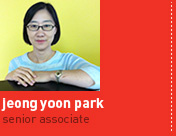
Interior design was Jeong Park’s passion, but during a backpacking trip through Europe she was drawn to the outdoor aesthetic and the experiential impact it created. Awarded a full scholarship to the University of Illinois, she obtained a Master in Landscape Architecture. She strongly believes each project has its own energy and the best concepts originate from the most abstract ideas. Jeong always begins her assignments with rough sketches where creative concepts are vividly translated through hand drawings. With a blend of contemporary and traditional styling, she finds inspiration in her every day surroundings and the influence varying colors, materials and patterns have on creating a sense of place. Jeong joined EDSA Orlando, whom she affectionately refers to as family, in 2004. During her tenure she has amassed a portfolio of work in Korea, China, the US and South America. |
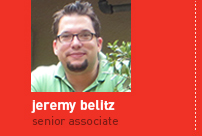
An Oklahoma State University alumni, with a Bachelor in Landscape Architecture, Jeremy Belitz joined EDSA in 2002. His design style combines a unique appreciation for a site’s context with a passion for contemporary design sensibilities. Often charged with developing a dynamic vision that guides the overall character of an inviting destination, Jeremy revels in creating something from an amorphic piece of land with no set boundaries. The Santa Maria Golf & Country Club in Panama rates as his most memorable project crediting the professional collaboration of a remarkable team, which included the late Ed Stone. A member of the Kissinger Studio, Jeremy has developed several master plans and has been involved in conceptual design through construction related services for a variety of noteworthy projects in the US, Mexico, Costa Rica, China, Colombia and Panama. |

Tom Green-Whitehead is intrigued by how landscape architecture unites both left and right brain functionality. Melding logical, linear and factual thinking with the creative application of color, movement and imagination, Tom’s designs create destinations characterized by the location’s distinct attributes and people. Attracted to theme park design, he is fascinated with how the fun atmosphere is the result of a hidden science and calculated purpose in all program components, from pedestrian circulation and parking, to placement of retail and length of streets. A graduate of Ball State University, Tom joined EDSA in 2007 and currently part of the LaMont studio. He has had the opportunity to travel to Southeast Asia on assignment and is excited to learn about new cultures and incorporate his experiences into design endeavors. Tom skillfully balances multifaceted work assignments with a busy family life and two young children. |
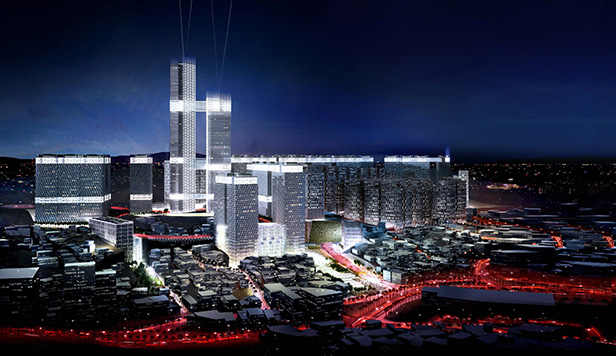
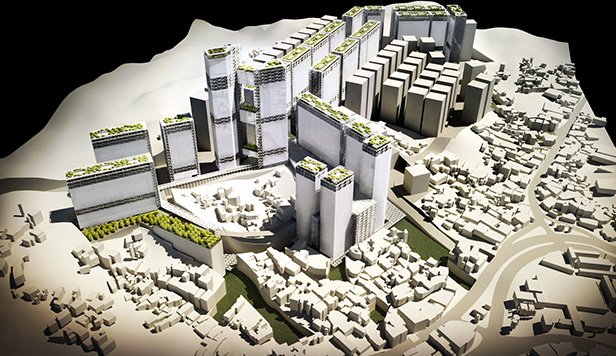

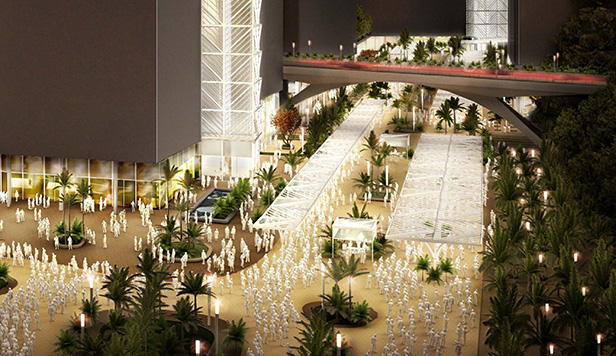

Each year, more than 2.5 million Muslims from across the globe flood Mecca's narrow streets for traditional pilgrimages. Within six years, the government hopes to reinforce the existing infrastructure of Mecca's Grand Mosque installing pedestrian foot bridges and a four-line metro. As part of this historic city’s progression, there is a desire to increase hotel space, retail offerings and suburban development including estate homes and a park for residents. These long-term projects are meant to support Mecca’s evolution – making pilgrimages safer and easier.
Within two kilometers of Al Haram in Mecca, Thakher City seeks to create a unique and memorable residential and hospitality based environment. The concept plan enhances the pilgrimage experience; improves vehicular and pedestrian mobility; addresses geotechnical and site accessibility issues; and creates a robust, interconnected open space network. The master plan provides the necessary framework to accommodate the new, large influx of visitors with minimal impact to the surrounding context.
The anticipated iconic urban form is the result of the collaboration between Thakher Real Estate Investment Company and the consulting team of EDSA, Skidmore Owings & Merrill LLP and Proger Engineering. Designed to accommodate up to 250,000 guests during peak periods, the concept design is based on a unified grid pattern that can address a multitude of different parcels and development scenarios as well as subtly orientate guests toward Al Haram at all times. The design aesthetic increases value with a new urban boulevard, separation of vehicular and pedestrian traffic access and an organized, sequential experience which intuitively guides pilgrims through the site to their destinations. Program elements include The Canyon, Thakher Park, Thakher Plaza, a pedestrian souk, hotels, residential, office, retail, mosques, utilizes and public facilities.
The ‘Canyon’, a pedestrian-only path, is carved through the mountains allowing pilgrims to walk directly from Al Haram to the lobby of their hotels. This public space, a 50 meter ravine, reaching 60 meters in depth, defines the primary pedestrian circulation and serves as an awe-inspiring gateway in scale and experience. The grid pattern is reinforced in the form of palm tree bosques and various courtyards. Planting patterns are grouped to create the impression of a winding path even though pedestrian mobility is unimpeded in any direction. The use of natural tree canopies, louvered overhead shading devices, water features and numerous seat walls address climatic condition. The layout of hardscape elements helps facilitate mass movement of visitors with an enhanced natural experience. A network of public elevators will bring thousands of people from the canyon level up to the street level where retail and other offerings are located.
The master plan addresses conservation and preservation of the historic town by reducing excavation as much as possible and providing a sustainable strategy for energy, waste, water and transportation. The planting palette and vegetation is sensitive to the arid environment utilizing xeriscaping techniques to minimize the need for water irrigation. Date palms which are incorporated in the national emblem of Saudi Arabia, represent vitality and growth. For this design, the date palm provides an amenable habitat offering shade and protection from desert winds.
EDSA is providing master planning and conceptual design services. http://www.edsaplan.com/en/Portfolio/Thakher-City
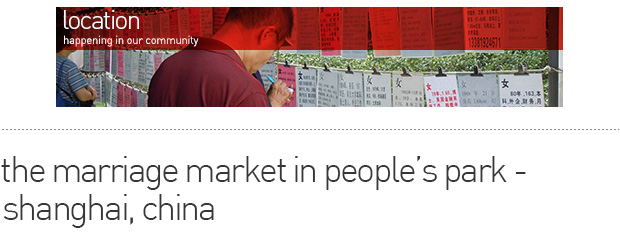
People's Park is the most iconic park in Shanghai. A former race track, this green refuge, in the middle of a city of around 20 million people, is now home to the Shanghai city government, museums, a theater and restaurants. People’s Square is also a major transportation hub and the perfect location for the "matchmaking corner" as the locals call it. Every Saturday and Sunday, hundreds of parents, displaying single sheets of paper that present their children in a few simple phrases gather in an effort to find an appropriate match for their heirs. A Shanghai institution since 2004, the Marriage Market is a means by which older generations are maintaining Chinese tradition through their children’s love lives by first establishing contact between the parents of both sides.

A fishermen mountainside village hanging down from the coastal fringe in northern Italy, Cinque Terre (CHINK-weh TAY-reh), which means "five lands", is a series of villages clinging to a remote stretch of the Riviera coastline. This charming town seemingly attached to the rocks by centuries of history appears to defy gravity. Part of Cinque Terre’s charm is the lack of visible modern development. Paths, trains and boats connect the villages and cars cannot reach it from the outside. The town itself is a gorgeous array of colorful buildings with winding streets and little plazas, encased by olive groves and dry-stone-walled vineyards. This is where discovery thrives.

Great work coupled with geographic and industry diversification is the foundation of EDSA’s success. The process of nurturing and growing an international firm poses a host of interesting and challenging opportunities. On the business side, there are the fluid changes in governmental regulations and the need for cultural awareness. From a financial perspective, executed contracts must be fairly crafted to protect the interests of all parties. In addition, as every country has its own distinct payment protocol, it is important to fully grasp the steps necessary to make this process as seamless as possible, with the end goal to minimize the average collection period. By focusing on contract structure – specifically scope, deliverables, terms and fees and maintaining the quality of accounts receivable, EDSA remains financially fit – poised to continue providing quality design on a global scale.









